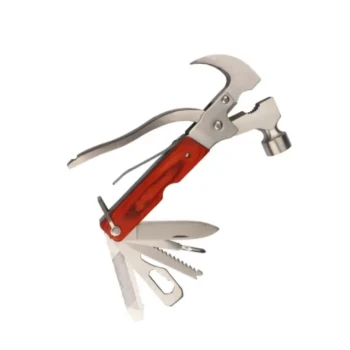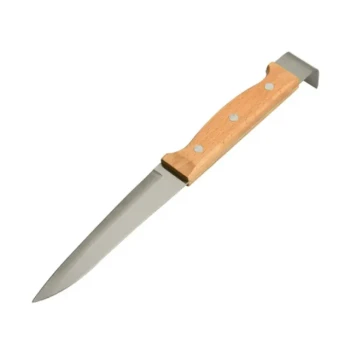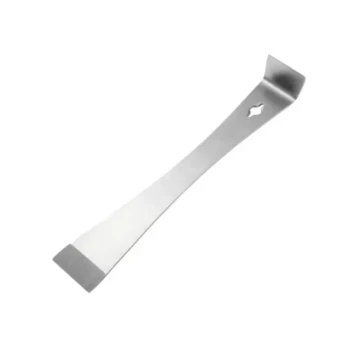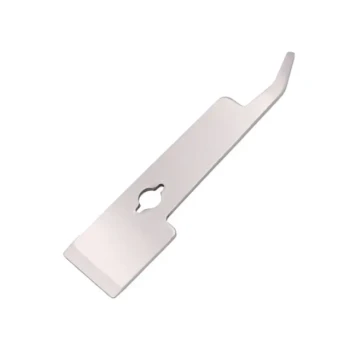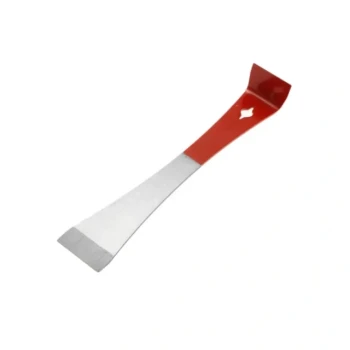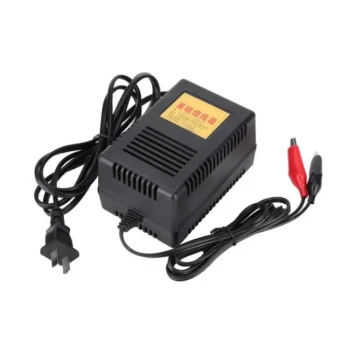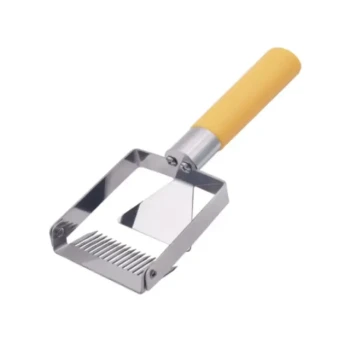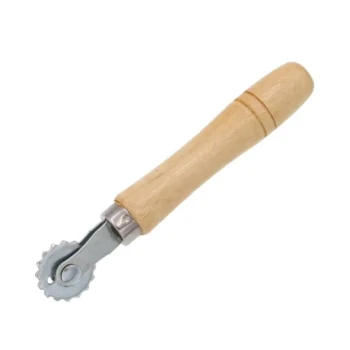For an everyday hive tool, the standard and most recommended size is between eight to ten inches in length. This range offers the best balance of leverage for prying open hive components and control for delicate work within the colony.
The ideal hive tool is not just about a specific length, but about finding the right balance between leverage and maneuverability that fits your personal hand size and working style.
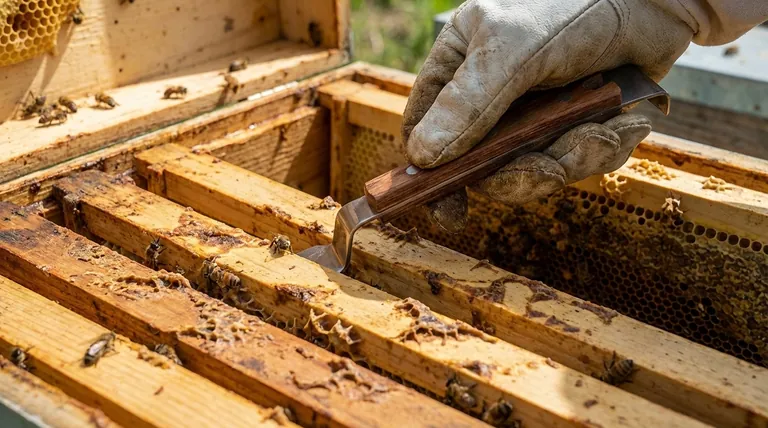
Why 8-10 Inches is the Standard
The recommended size for a hive tool isn't arbitrary. It's the result of decades of practical beekeeping, designed to meet the two primary physical demands of a hive inspection: prying and precision.
The Need for Leverage
A significant part of beekeeping involves separating hive bodies and frames that bees have sealed together with strong propolis. A tool with sufficient length provides the necessary leverage to break these seals with minimal effort and without jarring the colony.
The Importance of Control
Once inside the hive, you need to perform more delicate tasks, like cleaning frame tops or gently nudging frames. A tool that is too long becomes clumsy and difficult to maneuver in the tight confines of the hive. The 8-10 inch range provides enough control for this finer work.
The Critical Factor: Your Hand Size
While the 8-10 inch range is the standard, personal comfort is the deciding factor. The references rightly point out that beekeepers with smaller hands may find a more petite tool to be a better fit.
Why Comfort Dictates Efficiency
An uncomfortable tool can lead to hand fatigue and less precise movements during an inspection. A tool that fits your hand well feels like a natural extension of your arm, allowing you to work more confidently and efficiently with the bees.
Finding Your Fit
If you have smaller hands, a tool on the 8-inch end of the spectrum will likely provide better balance and control. Conversely, someone with larger hands might feel more comfortable and get better leverage from a 10-inch tool.
Understanding the Trade-offs
Choosing a tool outside the standard range comes with distinct disadvantages that can hinder your beekeeping work.
The Problem with Tools That Are Too Long
A tool significantly longer than ten inches can be unwieldy. It becomes difficult to control inside the hive, increasing the risk of accidentally rolling or crushing bees.
The Problem with Tools That Are Too Short
A tool shorter than eight inches will lack the leverage needed to easily break propolis seals. This forces you to use excessive force, which can damage your woodenware and upset the hive.
Making the Right Choice
Your goal is to find the most effective and comfortable tool for you within the recommended range.
- If you have average to larger hands or prioritize maximum leverage: Opt for a hive tool closer to the 10-inch end of the spectrum.
- If you have smaller hands or prioritize fine control and maneuverability: A hive tool closer to the 8-inch end of the spectrum will be a more comfortable and efficient choice.
Ultimately, the best hive tool is the one that allows you to work safely and effectively in your beehives.
Summary Table:
| Feature | 8-10 Inch Hive Tool |
|---|---|
| Primary Use | Everyday hive inspections |
| Best For | Balance of leverage & control |
| Ideal User | All beekeepers (size based on hand comfort) |
| Key Advantage | Efficient prying and precise maneuverability |
Ready to find your perfect hive tool?
At HONESTBEE, we supply durable, professional-grade beekeeping supplies designed for the demands of commercial apiaries and equipment distributors. Our wholesale-focused operations ensure you get the reliable tools you need to work efficiently and safely with your colonies.
Contact HONESTBEE today to discuss your hive tool and equipment needs!
Visual Guide

Related Products
- HONESTBEE Premium Italian Style Hive Tool with Hardwood Handle
- HONESTBEE Professional Long Handled Hive Tool with Precision Cutting Blade
- HONESTBEE Advanced Ergonomic Stainless Steel Hive Tool for Beekeeping
- HONESTBEE Professional Multi-Functional Hive Tool with Ergonomic Wood Handle
- HONESTBEE 15-in-1 Beekeeper Multi-Tool with Hammer and Pliers for Beekeeping
People Also Ask
- What are some common uses of a hive tool? Essential Multi-Purpose Tool for Every Beekeeper
- How should beekeepers handle bees when using a hive tool? Master Calm, Deliberate Techniques
- What are the benefits of a multi-functional hive tool? Streamline Your Apiary Workflow with One Tool
- Is it advisable to manage a large number of hives alone? The Risks of Solo Beekeeping at Scale
- How is a hive tool used for scraping and cleaning? Master Hive Maintenance for a Healthy Colony




